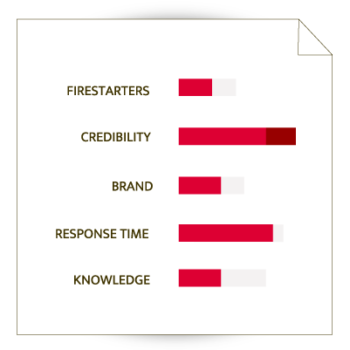
You won’t believe 1 in 2 startups are guilty of future selling
>
You won't believe 1 in 2 startups are guilty of future selling
Strange as it may sound, one in two startups I talk to do not have a single point of view of what they sell. This becomes apparent when I’ve conducted a mystery shop on a bunch of competitors. When I talk to the telephonists and online chat agents, I get sold a different version of the product.
For a startup trying to scale their operation, this spells disaster. Theoretically, the founder could be held accountable to deliver on multiple versions of the product.
Future selling accumulates
Imagine an internet startup employs three salespeople, each salesperson has a different idea of what functions the product performs. Assume each salesperson has two customer interactions per day. After a five day work week, they have sold a total of 30 versions of the product (3 x 2 x 5).
This is future sell
Future selling is when someone in the startup commits the company to build a feature tomorrow, in order to make a sale today. The startup falls foul of making the sale contingent on a feature which may not have been specified, costed or the feature thoroughly tested with the code-base.
Future sell to enough customers and your entire roadmap is railroaded. You spend your days reporting to each customer on progress towards a future sale. With so many promises competing for resources, the company fails to deliver to all customers and you close no deals. No happy customers, no roadmap – just a big mess.
Mystery shop uncovers future sell
In a mystery shop conducted in 2016, we mystery shopped eight competitors from the mobile payments sector in Asia Pacific, including TransferWise and Western Union. Of the eight, Transferwise scored 8 out of 10 for product knowledge. This was the highest score awarded this category.
High score for product knowledge went to Transferwise
Prevent future sell with a product fact sheet
A product fact sheet is a document that underpins Quadrant 2 of the 4Qs framework. Prepared by the product manager, it read rather like a television manual. No marketing fluff – just functions and limits.

Marketing, sales and the founder refer to the fact sheet as the single source of truth when talking about the product. Every brochure, press release, webinar has its roots in the product fact sheet.
End of each sprint update the product fact sheet
Normally the product fact sheet is updated each time the startup completes a development cycle or sprint. Each sprint ships new code to the public code base that customers enjoy immediately. Startups can complete sprints in less than a fortnight, effectively always shipping new product to the customer.
Because internet companies are always shipping, complacency recording what is being shipped creeps in. In every internet startup I have consulted to, none could produce a product fact sheet day one I arrived. Partial manuals, no warning labels, assembly parts missing. Meaning there was no point of view about exactly what was sold to the customer.
Learn more
Like to learn more about the 4Qs? Grab the book and read how to use the Quadrant 2 to draft a product sheet and protect the business from future sell. Quadrant 2 is one part of the 4Qs, a framework for designing a sales system.



